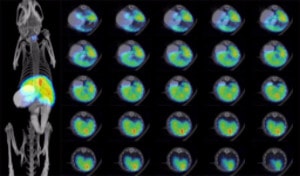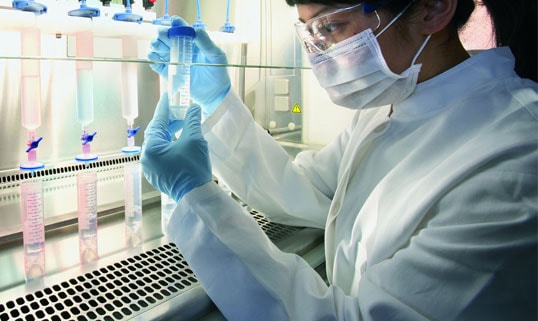Cell Lines
Imanis offers a wide-range of high-expressing, ready-to-use reporter cell lines for noninvasive imaging. Our expanding catalogue includes multiple human and murine cancer cell line models stably expressing a variety of reporter genes, giving you more options to best meet your research needs!
Human Lines:
Better Reporter Expression
Our stable reporter cell lines are generated by high-efficiency lentivirus transduction; the reporter gene is integrated in the target cell genome, facilitating stable reporter expression during continued passaging. Our polyclonal cell lines couple our reporter genes to an antibiotic selection gene (either puromycin or neomycin) to ensure that the population is comprised of high reporter-expressing cells. Our monoclonal cell lines undergo several rounds of selection to optimize high reporter gene expression. Reporter gene expression in each of our reporter cell lines is driven by the spleen focus-forming virus (SFFV) promoter, which results in high constitutive expression in a wide range of mammalian cells and mouse models. Thus, our stable reporter cell lines are perfectly suited for in vivo imaging studies, where the high reporter gene expression facilitates detection of fewer implanted cells.
Multi-Modality Imaging
Imanis offers more options for in vivo imaging due to our unique selection of reporter genes. Our cancer cell models are available with one, or a combination, of our four main reporters: enhanced green fluorescent protein (eGFP), firefly luciferase (Fluc), near-infrared fluorescent protein (iRFP), or the sodium-iodide symporter (NIS). These reporters offer the flexibility to choose the imaging modality that will best meet your needs and equipment, whether it be intravital or conventional microscopy using eGFP, noninvasive in-life imaging using Fluc or iRFP, or noninvasive, high-resolution 3D PET/SPECT imaging using NIS.
Highest Quality Cells
Our cell lines undergo extensive quality control analyses so that you can choose Imanis with confidence. In addition to ensuring sterility, each cell line undergoes rigorous testing for reporter gene expression, so you get only the best reporter-expressing cell lines. All of our cell lines are certified mycoplasma free. Moreover, our parental cell lines are authenticated with short tandem repeat (STR) profiling, in accordance with recommendations by the NIH as well as several other funding organizations and major publishers (footnote).
Footnote: It has been estimated that ~18-36% of cell lines utilized in biomedical research are contaminated or completely misidentified (Hughes et al., BioTechniques 2007). Consequently, verification of cell line identity is of critical significance. Several funding organizations, including the NIH, and major publishers, such as those affiliated with the American Association for Cancer Research (AACR), have established requirements for cell line authentication prior to publication.

